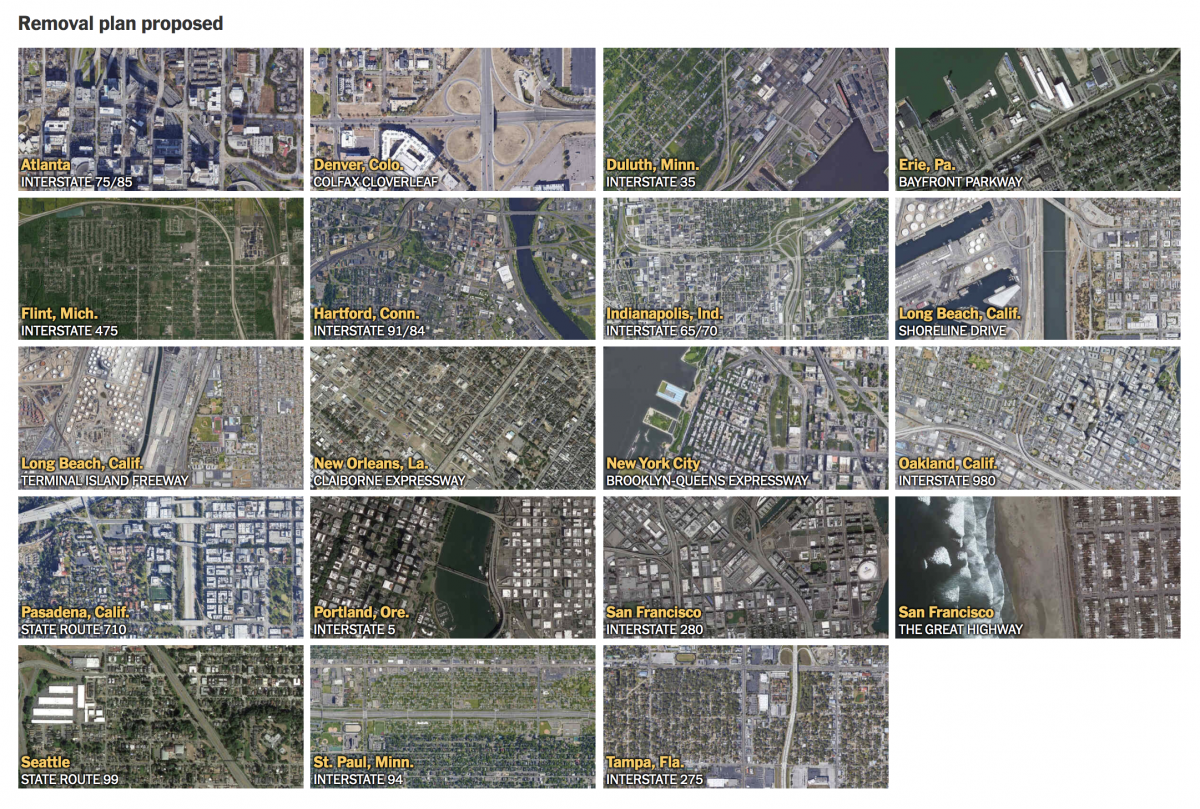PUBLISHED MAY 27, 2021 in the New York Times
ROCHESTER, N.Y. — Built in the 1950s to speed suburban commuters to and from downtown, Rochester’s Inner Loop destroyed hundreds of homes and businesses, replacing them with a broad, concrete trench that separated downtown from the rest of the city.
Now, the city is looking to repair the damage. It started by filling in a nearly-mile-long section of the sunken road, slowly stitching a neighborhood back together. Today, visitors of the Inner Loop’s eastern segment would hardly know a highway once ran beneath their feet.
As midcentury highways reach the end of their life spans, cities across the country are having to choose whether to rebuild or reconsider them. And a growing number, like Rochester, are choosing to take them down.
In order to accommodate cars and commuters, many cities “basically destroyed themselves,” said Norman Garrick, a professor at the University of Connecticut who studies how transportation projects have reshaped American cities.
“Rochester has shown what can be done in terms of reconnecting the city and restoring a sense of place,” he said. “That’s really the underlying goal of highway removal.”
The project’s successes and stumbling blocks provide lessons for other cities looking to retire some of their own aging highways. Nearly 30 cities nationwide are currently discussing some form of removal.
Some, like Syracuse and Detroit, have committed to replacing stretches of interstate with more connected, walkable neighborhoods. Others, like New Orleans and Dallas, are facing pressure from local residents and activists to address the pollution, noise and safety hazards brought by the mega-roads.
Read the full story, and view the amazing interactive maps here…

